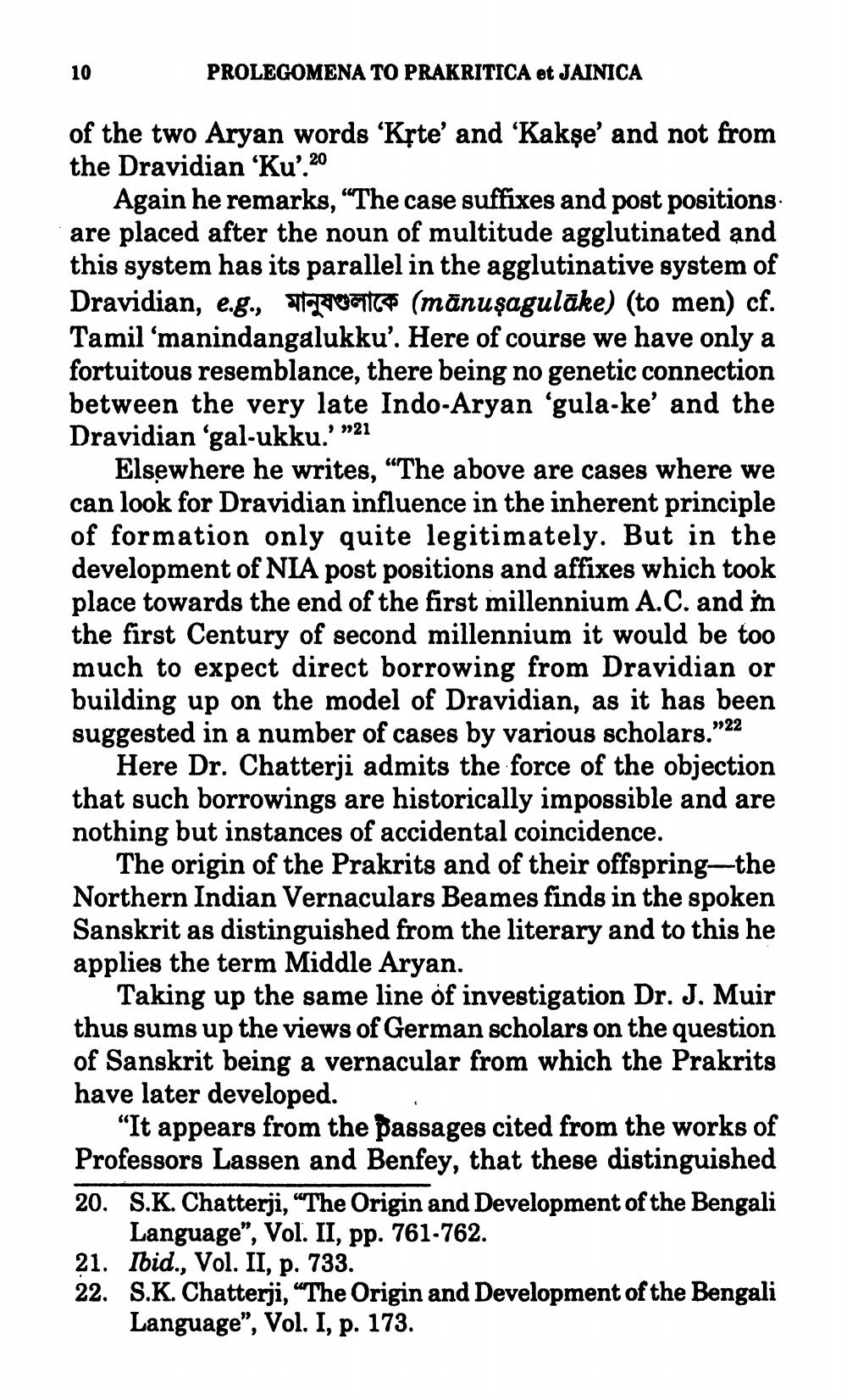________________
PROLEGOMENA TO PRAKRITICA et JAINICA
of the two Aryan words 'Krte' and 'Kakşe' and not from the Dravidian 'Ku'.20
Again he remarks, “The case suffixes and post positions. are placed after the noun of multitude agglutinated and this system has its parallel in the agglutinative system of Dravidian, e.g., The C (mānuşagulāke) (to men) cf. Tamil ‘manindangalukku'. Here of course we have only a fortuitous resemblance, there being no genetic connection between the very late Indo-Aryan 'gula-ke' and the Dravidian ‘gal-ukku.' "21
Elsewhere he writes, “The above are cases where we can look for Dravidian influence in the inherent principle of formation only quite legitimately. But in the development of NIA post positions and affixes which took place towards the end of the first millennium A.C. and in the first Century of second millennium it would be too much to expect direct borrowing from Dravidian or building up on the model of Dravidian, as it has been suggested in a number of cases by various scholars."22
Here Dr. Chatterji admits the force of the objection that such borrowings are historically impossible and are nothing but instances of accidental coincidence.
The origin of the Prakrits and of their offspring—the Northern Indian Vernaculars Beames finds in the spoken Sanskrit as distinguished from the literary and to this he applies the term Middle Aryan.
Taking up the same line of investigation Dr. J. Muir thus sums up the views of German scholars on the question of Sanskrit being a vernacular from which the Prakrits have later developed.
"It appears from the passages cited from the works of Professors Lassen and Benfey, that these distinguished 20. S.K. Chatterji, “The Origin and Development of the Bengali
Language", Vol. II, pp. 761-762. 21. Ibid., Vol. II, p. 733. 22. S.K. Chatterji, “The Origin and Development of the Bengali
Language”, Vol. I, p. 173.




